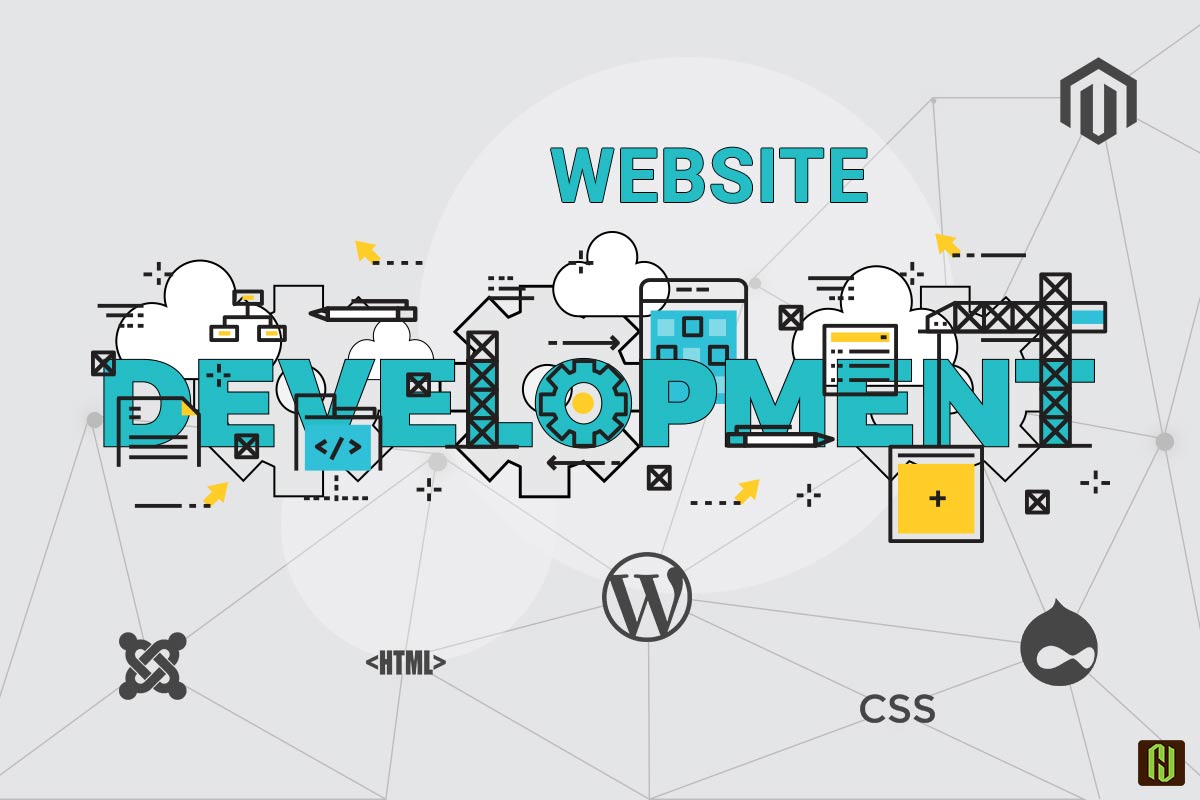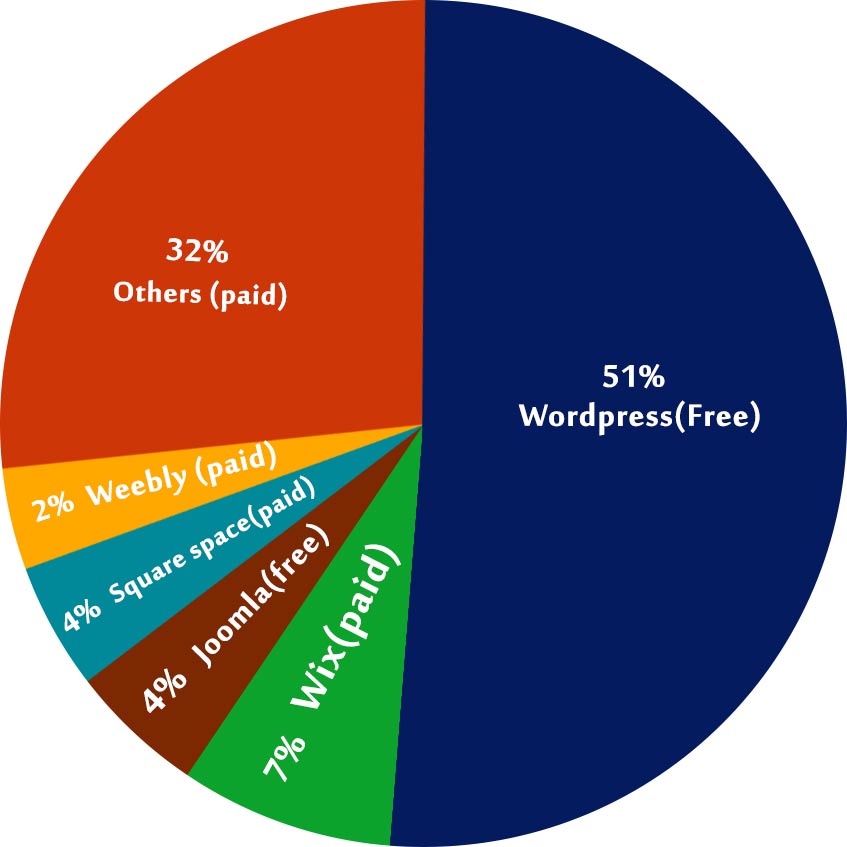
We've come a long way with innovations in terms of technological development time and time again.As a result we have tons of options available for budding website-builders, whether they have an in-depth knowledge of coding or not. If you're ready to tumble upon building a page of your own website, here's what you need to know. This guide will show you how most web developers build their sites and how you can avoid expensive website builders that are often too limited for a bigger site.
Get ready to launch your own website today? Let’s get started!
Choose the Right Platform
There are hundreds of different website building platforms and website builders around the market.
WordPress, Wix, Joomla, Drupal… Just to name a few.
As you can see from the graph above, in 2018, most popular website builders ( content management systems) are:

That is why Most People Use WordPress to Build a Website. Unlike other website builders, it’s completely free to use.
To get a Domain Name and Web Hosting In order to set up your WordPress, you’re going to need two things:
Domain Name (a web address "YourCompanyName.com". )
Web Hosting a medium that connects your website to the internet to manage all your storage of images, content and website files once you are done with web hosting you can access you website content easily. Web hosting is mandatory as your website will be invisible on the Internet without it.
In a nutshell – without a web hosting and a domain name, your website will NOT exist.
Where do I get a domain name and hosting?
Step:1. Go To www.Bluehost.com or any one of the Web Host
Step 2. Choose a Domain Name
While creating a website for your business it should be YourCompanyName.com as your domain name should perfectly match your company name
In case you’re planning to set up a website for yourself it should be YourName.com you can choose any domain name to suit your requirement. It’s an advice to go with something that perfectly describes what you have to offer – and even then, see if you can find a more common name u can follow these.com, .net or .org. to avoid taking risk.
Step 3. Fill In Your Details:
Go to “Create your account” page and fill in your personal details. Add details faultlessly and accurately. Receipt will be sent to the email address you have mentioned in your account detail. Enter your payment information and keep following further instructions given by the provider.
Step 4. Read “Package Details” Carefully and accordingly Finish Registration .So you have almost reached to the last steps where you can go through before your account creation is complete, choose the length of your web hosting registration, Choose addons and length. Getting a domain privacy protection is equally recommended.
Step 5: Website Set Up
After you’ve bought your domain name and hosting, you’re now ready to get your website up and running.
Firstly you’ll need to install WordPress to your hosting. There are two possible ways to install WordPress, one MUCH easier than the other, you can do it MANUALLY or USE ONE-CLICK INSTALLATION.
Create the database and eventually create a database password and username to access the database. Permit the database with the created user to alter,update,delete etc.
Step 6:Access FREE themes in WordPress
Further Options provided by WordPress for editing
Step 7: Static Front Page set up
When your home page looks like a blog post. You need to fix that by making your home page “static”.
The basic function of the first static page is to show the same content each and every time some one comes to the website just like the home page you’ve created.
Step 8:Editing sidebar
“Plugins” are extensions that are developed to expand WordPress in terms of its capabilities, adding features and functions to your site as they are not built-in.Plugin helps to extend various possibilities.
No need of building features from scratch as you can use shortcuts, Plugins could be used for everything right from adding photo galleries and form submission till optimizing your website and designing an online store.
You can create a list of the popular plugins that webmasters find useful.
This is just a crux to understand the flow.
Now you are ready to click the publish button and become live ....
You now have a fully-functional WordPress website!Fully created by you
Last but not least – keep improvising your website!
On 15 Dec 2018
© 2017 Herba Technologies Pvt. Ltd. All Rights Reserved | Design by Herba Tech